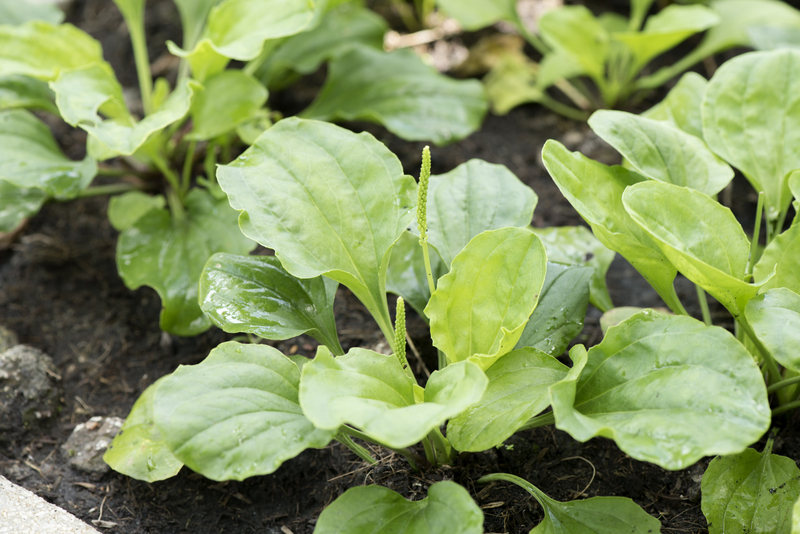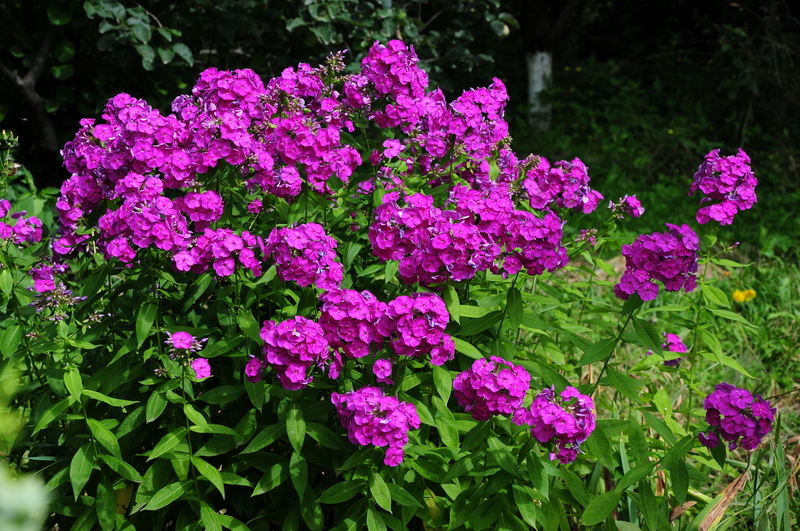Design your secluded garden escape with these 9 thriving privacy hedges
Posted on 21/06/2025
Design Your Secluded Garden Escape with These 9 Thriving Privacy Hedges
Are you dreaming of a tranquil outdoor sanctuary, hidden from prying eyes and filled with lush greenery? A private garden retreat is not only a haven for relaxation but also a stylish canvas for your creativity. The secret to achieving this idyllic escape lies in choosing the right privacy hedge. These living walls provide effective screening, reduce noise pollution, and enhance the aesthetic appeal of your yard.
In this comprehensive guide, we highlight nine robust privacy hedges that thrive in various climates and soil conditions. Whether you favor fast-growing options, fragrant foliage, or low-maintenance varieties, you'll discover the perfect choices to design your secluded garden escape.
Why Opt for a Living Garden Screen?
Privacy hedges are more than just barriers. They are vivid, dynamic borders that transform your yard into a peaceful retreat. Here's why they're becoming the go-to solution for garden privacy:
- Natural Screening: Hedges offer year-round seclusion, unlike fences that can look stark or man-made.
- Noise Reduction: Thick foliage can muffle sounds, promoting a serene atmosphere.
- Wildlife Habitat: Birds and pollinators find refuge and food in hedge plants.
- Eco-Friendly: Growing hedges improve air quality and promote biodiversity.
- Versatile Style: Hedges can be clipped for formality or allowed to grow wild for a cottage vibe.
- Property Value Boost: Well-designed green screens enhance curb appeal and add value.
Things to Consider Before Planting Your Privacy Hedge
Selecting the right privacy hedge plant involves matching species to your climate, soil, and design vision. Here are a few factors to keep in mind:
- Growth Rate: Are you seeking instant results or willing to wait for maturity?
- Evergreen vs. Deciduous: Evergreens provide year-round cover; deciduous types lose leaves in winter.
- Height & Width: Ensure your choice fits the available space and desired level of screening.
- Maintenance: Some hedges need frequent trimming, others are relatively low-maintenance.
- Local Climate & Soil: Select species adapted to your garden's specific conditions.
Now, let's explore the top thriving hedge plants that can help you design your own secluded garden hideaway.

9 Thriving Hedges for a Secluded Garden Escape
-
1. English Laurel (Prunus laurocerasus)
The English Laurel is a classic choice for an effective, lush privacy screen. Its broad, glossy leaves create a dense, evergreen barrier that's fast-growing and adapts well to trimming.
- Height: 10-20 feet (if untrimmed)
- Growth rate: Up to 2 feet per year
- Best for: Formal or informal hedges
- Bonus: Produces fragrant white spring flowers
- Care: Prefers moist, well-draining soil; tolerates shade
-
2. Arborvitae (Thuja occidentalis)
Renowned for its tall, columnar shape and dense needles, Arborvitae is among the most popular hedge plants for privacy. The 'Emerald Green' cultivar is a favorite for its tidy habit.
- Height: 10-15 feet (standard cultivars)
- Growth rate: 1-3 feet per year (fast-growing)
- Best for: Narrow spaces, windbreaks, formal screens
- Care: Thrives in full sun; tolerates cold, drought, and urban conditions
-
3. Privet (Ligustrum spp.)
The classic choice for traditional garden living fences, privet hedges are well-loved for their rapid growth and adaptability. With regular pruning, they form an impenetrable leafy wall.
- Height: 4-12 feet, depending on species
- Growth rate: Vigorous; up to 2 feet/year
- Best for: Shaped, formal hedges
- Bonus: Some varieties carry fragrant summer blossoms
- Care: Easily tolerates various soils and urban pollution
-
4. Boxwood (Buxus sempervirens)
Boxwood boasts small, glossy leaves and slow, manageable growth. Often seen lining French parterres, it excels for low, elegant borders but can also form medium-height privacy screens in compact yards.
- Height: 2-6 feet
- Growth rate: Slow
- Best for: Formal gardens, low hedges, or topiary
- Care: Thrives in partial shade; benefits from periodic shearing
- Bonus: Deer-resistant and evergreen
-
5. Photinia (Photinia fraseri 'Red Robin')
For a splash of color, Photinia is a stunning option. Its young foliage emerges in a brilliant red, gradually turning glossy green with age. This hedge is cherished for both vibrant appearance and dense growth.
- Height: 8-15 feet
- Growth rate: Moderate to fast
- Best for: Adding color and privacy in a single screen
- Care: Prefers sun to light shade; prune after new growth appears
-
6. Holly (Ilex species)
If you crave a dense, year-round privacy hedge with festive flair, holly is your answer. With spiny, dark-green leaves and bright winter berries (on female plants), holly is both a beautiful and practical solution.
- Height: 6-15 feet, depending on variety
- Growth rate: Moderate
- Best for: Security (spiny leaves) and winter interest
- Bonus: Attracts birds and offers habitat
- Care: Tolerates partial shade and urban conditions; prefers acidic soil
-
7. Hornbeam (Carpinus betulus)
European Hornbeam makes a stately, deciduous screen with deeply ribbed, fresh green leaves that turn golden in autumn. Its ability to hold onto brown leaves through winter provides extended privacy.
- Height: Up to 40 feet (usually pruned to 8-15 feet)
- Growth rate: Moderate
- Best for: Formal hedges or large properties
- Care: Tolerates many soils; benefits from regular shaping
-
8. Cherry Laurel (Prunus lusitanica or Prunus laurocerasus 'Rotundifolia')
Not to be confused with English Laurel, Cherry Laurel varieties offer glossy, elongated leaves and excellent sound buffering. Their tolerance for urban pollution makes them ideal for suburban gardens.
- Height: 10-18 feet
- Growth rate: Fast
- Best for: Fast privacy screens with dense foliage
- Care: Prefers moist, well-drained soil; tolerates partial shade
- Bonus: Fragrant white flower spikes in summer
-
9. Bamboo (Phyllostachys or Fargesia)
For contemporary garden hedges with an exotic feel, bamboo offers rapid growth and distinctive visual impact. Choose clumping varieties like Fargesia for a non-invasive, easy-to-manage option.
- Height: 10-25 feet (depending on variety)
- Growth rate: Exceptionally fast
- Best for: Tall, dense screens in modern gardens
- Care: Needs rich, well-drained soil and regular watering
- Bonus: Gentle rustle in the wind adds a relaxing soundscape
How to Plant and Maintain Your Privacy Hedge
1. Preparation is Key
Clear the planting area of weeds, stones, and debris. Dig a trench that's at least twice the width of the root ball and loosen the base soil for best root establishment.
2. Spacing Matters
Proper spacing determines the effectiveness and appearance of your garden privacy hedge. For a dense screen:
- Shrubs like laurel and privet: 2-3 feet apart
- Boxwood: 1.5-2 feet apart
- Bamboo: Space according to mature clump size
3. Watering and Feeding
New hedges need consistent watering, particularly through the first summer. Apply a balanced, slow-release fertilizer in spring to encourage vigorous growth.
4. Pruning and Shaping
Regular pruning keeps your secluded garden hedge healthy and attractive. For formal screens, trim a couple of times each season. Informal or wildlife-friendly hedges can be pruned less often.
5. Mulching
Add a layer of organic mulch around the base each spring to retain moisture and suppress weeds.
Enhance Your Private Garden Retreat
Once your privacy hedge is established, amp up the oasis vibe with these finishing touches:
- Underplanting: Use shade-loving groundcovers or bulbs at the base for seasonal color.
- Garden Seating: Place a bench or hammock in the most secluded spot for ultimate relaxation.
- Water Features: The sound of trickling water can mask sounds and reinforce a tranquil mood.
- Lighting: Add solar lanterns or fairy lights for evening ambience and visual interest.
- Wildlife Encouragement: Install bird feeders or insect hotels to support local biodiversity.

Choose Sustainable Privacy for Your Sanctuary
Compared to brick, stone, or timber fences, living privacy screens offer a host of eco-friendly advantages. A mature hedge can absorb carbon dioxide, filter dust from traffic, and create vital corridors for wildlife. Birds use dense shrubs for nesting and protection, while pollinators feed on flowers in hedges like holly and laurel.
By opting for sustainable hedging plants, you'll build not only a private oasis, but also a vibrant ecosystem that benefits your community and the planet.
Design Your Dreamy, Secluded Garden Escape Today
With these 9 thriving privacy hedges at your fingertips, designing a serene, hidden retreat is easier than ever. Whether you want a classic green wall, a splash of seasonal color, or a modern bamboo screen, the perfect hedge awaits.
Take action: Assess your outdoor space, pick the ideal species for your needs, and begin your journey to ultimate garden privacy. Before you know it, you'll have a natural refuge where you can read, meditate, or entertain in complete seclusion.
Ready to transform your yard? Plant your privacy hedge and create the ultimate garden getaway!
- English laurel, arborvitae, and privet: Fast-growing privacy screen favorites
- Boxwood and hornbeam: Ideal for formal, structured hedges
- Photinia and holly: Add vibrant color and winter interest
- Cherry laurel and bamboo: Excellent for sound buffering and modern spaces
- All choices: Low-maintenance living fences that boost aesthetics and ecological value
From thriving privacy hedge plants to easy-care screening shrubs, there's an option for every style and climate. With thoughtful planning and the right plant selection, you can design your very own secluded garden escape--one lush leaf at a time.



